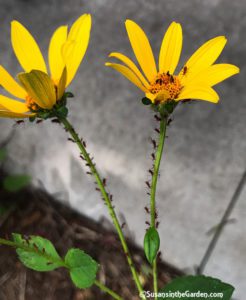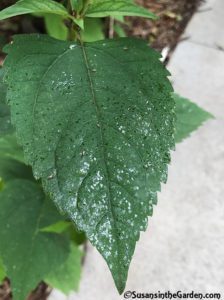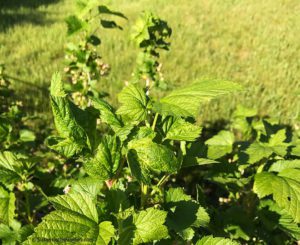Aphids
Size: 1/8 inch
Color(s): Green, white, yellow, brown, black
Life Cycle: You probably don’t want to know this part! For the most part, they reproduce through asexual reproduction. The female aphids give birth to female (daughter) aphids throughout the year, producing several dozen generations. Ugh. Those daughters are born through live birth, rather than hatching from eggs. When sexual reproduction does take place, that’s for the purpose of laying eggs that will overwinter — to start the cycle all over again the following spring. The eggs are laid on winter host plants, rather than the host plants you typically see aphids on during the growing season.
 Signs of their activity: Curling leaves (see photo at top), stunted growth tips, aphid honeydew (clear secretions, see bottom photo), decreased vigor.
Signs of their activity: Curling leaves (see photo at top), stunted growth tips, aphid honeydew (clear secretions, see bottom photo), decreased vigor.
Typically seen on: Cabbage family crops, roses, currants and many, many other types of plants.
Controls: Blast of water, floating row cover, tulle netting), insecticidal soap specifically labeled for aphid control. Or wait for ladybugs.
 Natural predators: Assassin bugs, big-eyed bugs, damsel bugs, green lacewing larvae, hoverfly larvae, ladybugs, minute pirate bugs, parasitic wasps and spiders.
Natural predators: Assassin bugs, big-eyed bugs, damsel bugs, green lacewing larvae, hoverfly larvae, ladybugs, minute pirate bugs, parasitic wasps and spiders.
Additional information: Washington State University Hortsense Aphids.
Back to Organic Pest Control

